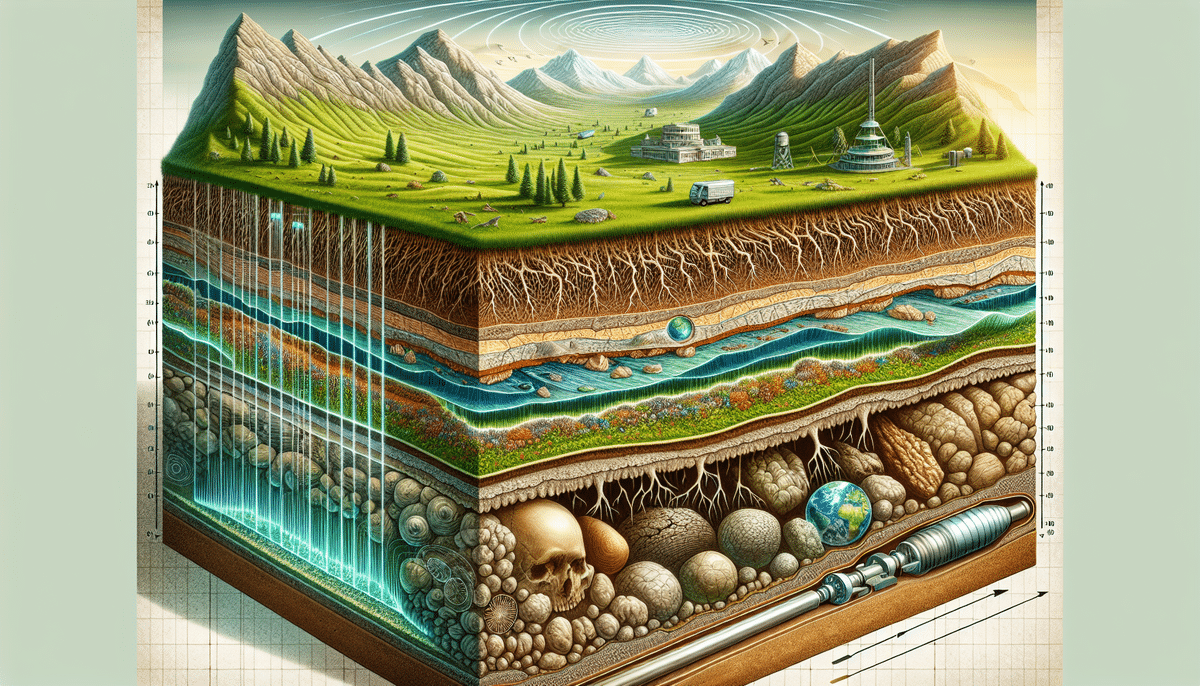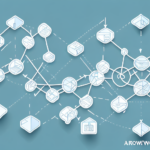Exploring the Ground Beneath Our Feet
The ground beneath our feet is an incredibly complex and dynamic system, comprising layers of soil, rocks, minerals, fossils, and water. Understanding this underground world is not only fascinating from a scientific perspective but also has significant practical applications in fields such as agriculture, geology, hydrology, and engineering. In this article, we will delve into various aspects of the ground beneath us, including soil composition and its impact on plant growth, the historical insights revealed by archaeological sites, and the utilization of geophysical tools for exploration and energy production.
The Importance of Understanding Soil Composition
Soil is the foundation of our natural ecosystem, and its composition profoundly affects plant growth, animal habitats, and overall environmental health. Soil consists of organic matter, minerals, water, and air, with the ratio of these components varying based on factors like climate, vegetation, and land use. Key soil properties influencing fertility and productivity include texture, structure, pH, nutrient content, and water-holding capacity. By analyzing soil samples and understanding these properties, farmers and researchers can make informed decisions about crop selection, fertilization, irrigation, and other management practices.
One critical but often overlooked aspect of soil composition is the presence of microorganisms. These tiny organisms play a crucial role in breaking down organic matter and releasing nutrients essential for plant growth. Additionally, some microorganisms help suppress plant diseases and pests, reducing the need for chemical pesticides. Understanding the diversity and abundance of microorganisms in soil is therefore vital for sustainable agriculture and environmental management.
Human activity also significantly influences soil composition. Land use changes, such as deforestation or urbanization, can lead to soil degradation and loss of fertility. The use of chemical fertilizers and pesticides can negatively impact soil health and biodiversity. Promoting sustainable land use practices and reducing reliance on harmful chemicals can help preserve soil health and productivity for future generations.
For more detailed information on soil health, refer to the ShipScience Soil Health Report.
How Soil Affects Plant Growth and Agriculture
The quality and quantity of soil are critical determinants of crop success. Soils that are too compacted, sandy, acidic, or deficient in nutrients impede plant growth. Soil fungi and bacteria, which are vital for decomposing organic matter and cycling nutrients, also influence plant health. Understanding these interactions between soil and vegetation is essential for sustainable agriculture and ecosystem management.
Soil erosion is another significant factor affecting plant growth and agriculture. Erosion can result from natural processes like wind and water or from human activities such as deforestation and overgrazing. Soil erosion leads to the loss of nutrients and organic matter, negatively impacting plant growth and causing sedimentation in waterways, which harms aquatic ecosystems. Implementing erosion control measures, such as planting cover crops and reducing tillage, can mitigate these adverse effects.
- Impact of Soil Quality: Poor soil quality can reduce crop yields by up to 30%.
- Erosion Statistics: Globally, soil erosion affects approximately 75 billion tons of soil annually.
According to the ShipScience Agriculture Report, sustainable practices can enhance soil fertility and increase crop resilience.
The Role of Microorganisms in Soil Health
Microorganisms such as bacteria, fungi, and protozoa are essential for maintaining soil health and productivity. Beneficial microorganisms help plants absorb nutrients and defend against diseases, while others break down organic matter, releasing nutrients back into the soil. A diverse microbial community is key to a healthy and resilient soil ecosystem, but factors like tillage, pesticide use, and monocultures can negatively impact microbial populations.
One of the most important roles of microorganisms in soil health is nitrogen fixation. Certain bacteria, such as Rhizobium, form symbiotic relationships with leguminous plants like beans and peas, converting atmospheric nitrogen into a form usable by plants. This process not only benefits the plants but also enriches the soil with nitrogen, a crucial nutrient for plant growth.
In addition to nutrient cycling, microorganisms enhance soil structure. Fungal hyphae, for example, form networks that bind soil particles together, creating pore spaces for water and air movement. This improves soil aeration and drainage, benefiting plant growth. Maintaining a healthy and diverse microbial community allows farmers and gardeners to improve soil health and productivity while reducing the need for synthetic fertilizers and pesticides.
Learn more about soil microorganisms in the ShipScience Microorganism Role Study.
The Impact of Human Activity on Soil Quality
Human activities such as agriculture, mining, construction, and urbanization significantly impact soil composition and quality. Soil erosion, compaction, contamination, and depletion are widespread problems that decrease productivity, biodiversity, and soil function. Monitoring and mitigating these impacts are crucial for protecting soil resources for future generations.
Soil erosion, often caused by deforestation and overgrazing, removes the topsoil, leading to nutrient loss, reduced water-holding capacity, and decreased soil fertility, which adversely affect agricultural productivity.
Soil contamination occurs when pollutants like heavy metals, pesticides, and fertilizers enter the soil, intentionally or unintentionally. Contaminated soils pose serious health risks to humans and animals and reduce soil productivity and biodiversity.
Implementing sustainable land management practices is essential to combat soil degradation. The ShipScience Soil Management Guide provides strategies and best practices for maintaining soil health.
Techniques for Analyzing Soil Samples
Understanding soil properties and composition requires various analytical techniques. Soil sampling involves collecting representative soil portions from specific areas and analyzing them for physical and chemical properties. Common soil analysis methods include:
- Visual Assessment: Evaluating soil color, texture, and structure.
- pH Testing: Measuring soil acidity or alkalinity.
- Nutrient Analysis: Determining the levels of essential nutrients like nitrogen, phosphorus, and potassium.
- Texture Analysis: Assessing soil particle sizes through sedimentation.
Advanced techniques such as X-ray diffraction and scanning electron microscopy provide detailed information about soil mineralogy and microstructure. Non-destructive methods, including ground-penetrating radar and infrared spectroscopy, allow for in situ soil analysis without disturbing the environment.
For a comprehensive overview of soil analysis techniques, visit the ShipScience Soil Analysis Resource.
Uncovering the History Buried in Archaeological Sites
Soil plays a pivotal role in preserving and revealing evidence of past human activities. Archaeologists and paleontologists analyze soil to date artifacts, reconstruct ancient environments, and decipher the genetics of prehistoric microorganisms. By studying soil layers, researchers can uncover clues about the diets, lifestyles, and social structures of ancient civilizations.
One fascinating aspect of soil analysis in archaeology is the study of ancient plant remains. Examining pollen and other plant materials in soil samples allows researchers to reconstruct past vegetation and climate conditions. This information provides insights into how ancient societies adapted to environmental changes and influenced surrounding ecosystems.
Modern technology has revolutionized archaeology through remote sensing techniques like LiDAR and ground-penetrating radar, enabling the mapping and visualization of archaeological sites without disturbing the soil. These technologies have led to the discovery of previously unknown sites and the ability to study large areas non-invasively. As technology advances, even more secrets of the past are likely to be uncovered.
Explore more about archaeological soil analysis in the ShipScience Archaeology Insights.
Understanding Geology: Rocks, Minerals, and Fossils
The ground beneath us consists not only of soil but also rocks and minerals that provide invaluable information about the Earth's history and formation. Geologists study rocks to determine their age, composition, and the processes that formed various geological features like mountains, volcanoes, and sedimentary basins. Fossils, which are imprints of ancient organisms preserved in rocks, offer insights into the evolution and diversity of life on Earth.
Geology is a continuously evolving field, with new discoveries and technologies enhancing our understanding of Earth's history and processes. For instance, isotope studies in rocks and minerals have revolutionized our comprehension of geological events such as continental formation and the evolution of life. Advances in imaging techniques enable the detailed study of rocks and fossils, revealing new structural and compositional insights.
For more information on geological studies, visit the ShipScience Geology Section.
The Science Behind Earthquakes and Volcanic Eruptions
The movement of tectonic plates is responsible for some of the most dramatic and destructive geological phenomena, including earthquakes and volcanic eruptions. Understanding the underlying geology and physics of these events is crucial for predicting, mitigating, and responding to natural disasters. Seismology, which studies the vibrations of the Earth's crust, and volcanology, which investigates magma behavior and volcanic gases, are key fields in this area.
Advances in monitoring technologies and data analysis have improved earthquake prediction models and volcanic activity forecasting, enhancing disaster preparedness and response strategies.
Learn more about seismic and volcanic research in the ShipScience Seismology and Volcanology Reports.
Investigating the Underground Water Cycle
Water is a vital component of the ground beneath us, with vast reserves stored in underground aquifers and channels. Hydrologists study the movement, distribution, and quality of groundwater to model and manage water resources effectively. Challenges such as groundwater contamination and depletion are pressing issues worldwide, making sustainable water management strategies essential.
Research indicates that groundwater accounts for approximately 30% of the world's freshwater resources. Sustainable management practices are necessary to ensure the long-term availability and quality of this critical resource.
The ShipScience Hydrology Study provides in-depth analysis and recommendations for sustainable groundwater management.
Mapping the Subterranean World with Geophysical Tools
Exploring the ground beneath us involves not only understanding its composition and history but also discovering resources and energy sources. Geophysical tools such as ground-penetrating radar, electromagnetic surveys, and gravity measurements provide detailed information about subsurface structures and properties. These tools are essential in applications ranging from oil and gas exploration to geothermal energy production.
For instance, ground-penetrating radar uses electromagnetic waves to create images of the subsurface, enabling the detection of buried objects, voids, and geological formations without excavation. Electromagnetic surveys measure the electrical properties of the ground to identify mineral deposits and groundwater resources.
Discover more about geophysical tools and their applications in the ShipScience Geophysical Tools Guide.
From Oil Exploration to Geothermal Energy: Practical Applications of Ground Surveying Technologies
Ground surveying technologies have diverse and far-reaching practical applications beyond resource exploration. These technologies are integral to engineering and construction projects, environmental management, and even space exploration. Geothermal energy, which harnesses the Earth's natural heat, is a sustainable and promising energy source that relies heavily on ground surveying technologies.
Geothermal energy production involves mapping underground heat reservoirs and assessing their potential for energy extraction. Advanced surveying techniques ensure efficient and environmentally friendly development of geothermal resources.
- Oil and Gas Exploration: Utilizing seismic surveys to locate hydrocarbon deposits.
- Environmental Management: Monitoring soil contamination and groundwater quality.
- Engineering Projects: Assessing ground stability for infrastructure development.
The ShipScience Geothermal Energy Report highlights the latest advancements and applications of ground surveying technologies in renewable energy.
Conclusion
Exploring the ground beneath our feet is a multifaceted and endlessly fascinating endeavor with profound implications for science, society, and the environment. By understanding soil composition, historical insights from archaeological sites, geological formations, and the functionalities of the subsurface, we can better appreciate the complexity and beauty of our planet. This knowledge enables informed decision-making for sustainable resource management and environmental conservation, ensuring the health and productivity of our planet for future generations.






















